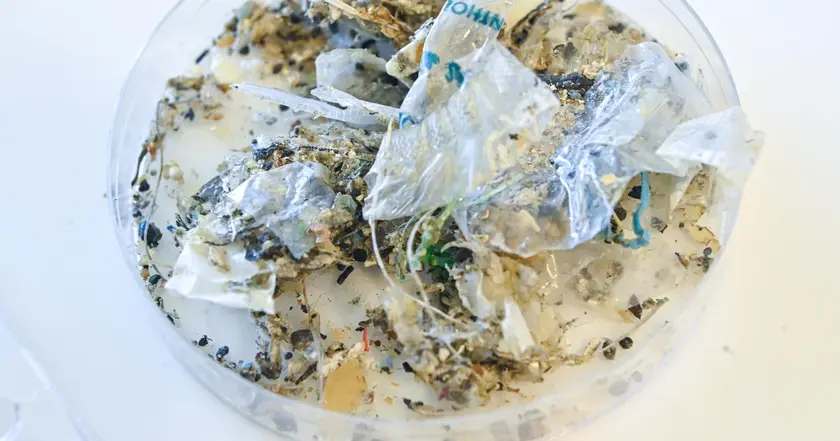T4K3.news
Experts warn cancer causing chemicals threaten humanity
A new eight month probe funded by the Grantham Foundation maps how pervasive toxicity threatens health and shows gaps in regulation.

An eight month investigation funded by the Grantham Foundation maps how pervasive toxicity threatens human and planetary health and highlights regulatory gaps.
Experts warn cancer causing chemicals threaten humanity
An eight month investigation by Deep Science Ventures, a London based research group, looked at how pervasive toxicity threatens human and planetary health. It found that the industrial economy has created more than 100 million chemicals not found in nature, with about 40 000 to 350 000 currently in commercial use and production up about fifty fold since the 1950s. More than 3 600 synthetic chemicals from food contact materials appear in human bodies, and 80 have hazard properties of high concern. The report links exposure to a range of health conditions including cancer, obesity, Alzheimer s disease, pregnancy issues, ADHD, fertility problems, heart conditions and respiratory ailments. Early onset cancer in people under 50 rose by about 79 percent from 1990 to 2019. PFAS, the so called forever chemicals, were found in almost all humans tested, with 14 percent of European teens having blood levels high enough to risk adverse health effects. Men with high PFAS levels also showed lower sperm counts.
PFAS are microscopic substances that take thousands of years to break down in the environment and human body. They can seep into the water supply from washing dishes and enter food if packaging is grease resistant or if non stick coatings deteriorate. PFAS are common in pesticides used on crops, creating runoff that can reach drinking water. The report singles out the food and agricultural sectors as the worst offenders, pointing to sewage sludge from wastewater plants spread on fields as a major source of toxic chemicals.
The researchers warn that PFAS have contaminated the whole world, with rainwater often exceeding safe limits for drinking water. They note the EPA set the maximum contaminant levels for PFAS at 4.0 parts per trillion last year. PFAS exposure may contribute to diabetes through several mechanisms, including disrupting pancreatic cells, increasing insulin resistance and possibly increasing body fat. Microplastics smaller than one micrometer, or nanoplastics, are of particular concern as they can infiltrate cells and cause DNA damage. They emphasize noticeable gaps in how industry and regulators address chemical toxicity and highlight loopholes in US regulation that allow more than 200 new food additives without pre market approval. In the FDA s database, almost 80 percent of chemical additives lack data needed to estimate safe intake and 93 percent lack reproductive or developmental toxicity data. Almost two thirds of regulated additives lack publicly available data. In the EU, despite a precautionary ethos there are still many exceptions and data gaps. The report concludes that the health and environmental costs are significant, including costs to the healthcare system. It calls for immediate action and for policymakers and industry to accelerate the growth of innovative technological solutions and fund them at pace.
Key Takeaways
"Failure to act decisively will likely lead to irreversible consequences for both human health and the delicate balance of our planet's ecosystems."
Closing warning from the report.
"The loophole lets companies decide when a substance is safe, not the FDA."
Critique of the US regulatory framework.
"PFAS have contaminated the whole world."
Global reach of PFAS contamination.
"For us to ensure our continued development and ability to thrive as a human species, we have to accelerate the growth of innovative, technological solutions and ensure these are funded and scaled at pace."
Author’s call to action for policy and industry.
The piece frames a widening gap between scientific knowledge and policy. It shows a system that tolerates uncertainty while exposing people to serious risk. The tension is clear: growth and convenience from modern chemistry clash with the need for robust data, accountability and safer substitutes. The report warns that delaying action could lock in harm for generations, with consequences that go beyond individual illness to fertility and ecosystem stability. It also exposes a political dimension: regulation, enforcement and even the burden of cleaning up may face budget pressures and public backlash. The authorial stance mixes urgency with a call for pragmatic reform, not panic, arguing that smart regulation and rapid investment in safer chemistry can protect health without stifling innovation.
Highlights
- The science is loud, but regulation remains slow
- The loophole lets companies decide when a substance is safe not the regulator
- We broke the planet and the bill arrives in our cells
- Act now before irreversibile damage becomes the default
Chemical exposure prompts policy scrutiny and budget pressure
The report links widespread chemical exposure to multiple health issues and highlights regulatory gaps in the US and EU, potentially triggering political backlash and higher costs for industry compliance.
Policy shortcuts cannot replace better science and stronger safeguards
Enjoyed this? Let your friends know!
Related News

Chemical pollution poses threat comparable to climate change

Longevity expert shares 10 health supplements

Health risks linked to black plastic coffee machines

Experts warn of cancer risks in canned cocktails

Supervolcano eruption may threaten global civilization

Nitrite levels found in UK ham prompt safety debate

High nitrites found in UK supermarket ham

Plastic pollution costs $1.5 trillion annually
